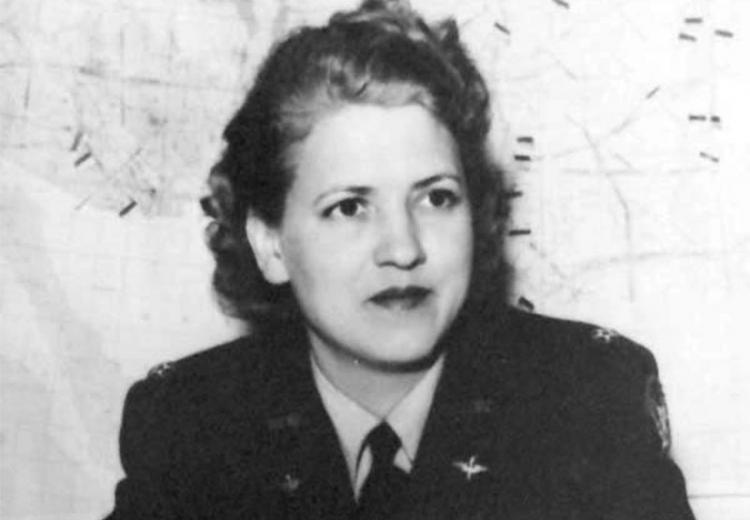First in Flight: Telling the Story of American Aviation

The Wright Flyer airborne during the first powered flight in Kitty Hawk, North Carolina, on December 17, 1903.
Photo by John T. Daniels, Kill Devil Hills Life Saving Station; Wikimedia

The Wright Flyer airborne during the first powered flight in Kitty Hawk, North Carolina, on December 17, 1903.
Photo by John T. Daniels, Kill Devil Hills Life Saving Station; Wikimedia
In 1939, President Franklin D. Roosevelt proclaimed August 19, Orville Wright’s birthday, as National Aviation Day in celebration of America’s then-fledgling aviation industry, pioneered by Orville and his brother Wilbur on the beaches of Kitty Hawk, North Carolina. The brothers’ groundbreaking achievement and the evolution of flight in the years that followed are documented by Chronicling America, a digital collection of historical newspapers supported by the National Endowment for the Humanities (NEH) and the Library of Congress, and in the children’s nonfiction book The Wright Brothers: How They Invented by the Airplane, by celebrated author and National Humanities Medal recipient Russell Freedman. Nearly 120 years after the brothers’ first flight, and eight decades since Americans first celebrated National Aviation Day, NEH projects are preserving the history of flight in the United States and telling the stories of aviators in documentary films, resources for aviation fans of all ages, and in museums and archives from coast to coast.
In August 2023, NEH announced $41.3 million in new grants to 280 humanities projects nationwide, including the cataloguing, rehousing, and digitization of 120,000 image negatives from the San Diego Air & Space Museum’s Convair collection. Titled “Great Explorations: Increasing Access to Our Aerospace Heritage,” this digitization project will advance research and shed light on the Convair workforce that was critical to American defense efforts from World War II through the Cold War era. “Consolidated Aircraft Company, later Convair/General Dynamics played a critical role in the advancement of the nation’s aerospace industry, and digitizing this collection of images is essential to unlocking its full historic potential and ensuring its long term survivability,” said Jim Kidrick, President and CEO of the San Diego Air & Space Museum. “Receiving this grant from the NEH is a direct reflection of the important work being conducted by our museum’s library and archives.”
In Seattle, Washington, where William Boeing founded the Boeing Company, the United States’s largest aerospace manufacturer, in 1916, the Museum of Flight is preserving aviation history and sharing its rich resources with audiences around the world. The museum has been the recipient of multiple awards from the Division of Preservation and Access, ensuring its collections will be properly cared for and accessible to the public for generations to come. In 2020, the museum was awarded a Humanities Collections and Reference Resources grant to process and digitize the archival materials of the William P. and Moya Olsen Lear Collection. The founder of Learjet, one of the first manufacturers of private jets, and a prolific inventor, William Lear’s collection will serve as a scholarly resource on the history of aviation, navigation, radio, and more in the United States. Spanning the 1920s to 1995, the collection includes 260 artifacts, 33 audio recordings, and 18 films, that will all be preserved and digitized. To support these efforts, NEH awarded the museum a Preservation Assistance Grant, in 2022, to develop a strategic technology plan for its digital collections. As digital preservation technology continues to evolve, museums and archives across the country are using NEH funds to train staff in best practices, upgrade technical infrastructure, and develop plans to ensure assets are protected well into the future.
NEH grants make U.S. history accessible and engaging, funding documentaries and resources that bring the stories of great Americans to life, including pioneering aviators. UNLADYLIKE2020, an NEH-supported series of 26 short films and a one-hour documentary profiling American women from the turn of the twentieth century, tells the story of Bessie Coleman, the first African American woman aviator. Becoming the first African American to acquire an international license to fly in 1921 after training in France, Colman was hailed as “Queen Bess.” Her brief career is detailed in this nine-minute film, now streaming on PBS. Younger audiences can learn more about the history of women in aviation with the EDSITEment lesson plan Women Aviators in World War II: “Fly Girls.” Designed for students in grades six through eight, this lesson explores the work of the Women Airforce Service Pilots during World War II and the portrayal of women in media from the period.
Travel back in time nearly ninety years to what is now known as the golden age of flight, the 1920s and 1930s, with the NEH-supported documentary series, Across the Pacific. Streaming on PBS, Across the Pacific tells the story of the China Clipper, a flying boat manufactured for Pan American Airways, an icon of American aviation. When the China Clipper made its historic journey from San Francisco, California, to Manila in the Philippines, it was an international event, broadcast on nine radio networks in four continents, taking millions of listeners along for the first commercial transpacific airmail service, a turning point in commercial flight. Episodes one, two, and three are available now.
To explore aviation history in your community, use the NEH-supported Clio tool to find museums and landmarks near you.



